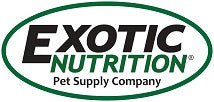Metabolic Bone Disease in Opossums: Causes, Symptoms, and Prevention
Metabolic Bone Disease (MBD) is a serious condition that affects opossums, leading to severe pain, crippling, and even death. It weakens the skeletal system, making movement difficult and causing significant discomfort. Understanding the causes, symptoms, and prevention methods is crucial for keeping your opossum healthy.
What Causes MBD?
MBD is primarily caused by an improper diet, particularly one with an incorrect calcium-to-phosphorus (Ca:P) ratio. Opossums require a Ca:P ratio of 1.5:1, and an imbalance—such as excessive protein or too many fruits—can lead to deficiencies. Low calcium levels trigger the parathyroid gland to extract calcium from the bones, weakening them over time.
Recognizing the Symptoms
-
Loss of grip in hands or feet
-
Tremors, twitching, or lethargy
-
Uncoordinated movement and difficulty climbing
-
Hunched posture and bowed legs
-
Fragile bones, skeletal deformities, and loss of appetite
As the disease progresses, opossums may become incapable of eating or drinking, with changes in skull structure affecting mouth function. Without treatment, organ systems can deteriorate, worsening their condition.
Prevention and Treatment
If detected early, MBD can be treated and even reversed with proper diet and care. Here are some key prevention methods:
-
Balanced Diet – Feeding a staple diet like Opossum Complete Opossum Food ensures proper nutrition.

-
Calcium Supplementation – Adding Liquid Calcium Supplement can help maintain strong bones and prevent deficiencies.
-
Calcium-Rich Foods – Supplement with leafy greens such as kale, cabbage, and collard greens. Meats with bones can provide additional calcium.
-
Hydration & Fresh Foods – Offering rehydrated fruits and vegetables, like Garden Fresh Re-Hydrate 10 oz, provides essential vitamins and minerals.
-
Vitamin D Exposure – Opossums need Vitamin D for calcium metabolism. While direct sunlight can cause overheating, indirect sunlight or a UVB reptile light can support their needs.
By maintaining a well-balanced diet and proper supplementation, you can help prevent Metabolic Bone Disease and keep your opossum healthy. Browse Exotic Nutrition’s full selection of opossum care products here.
Ready to Shop? Shop By Pet or Shop By Category
Want Discounts? Click here to subscribe to email and SMS marketing
Got Questions? Browse more free Blogs or Contact Us with any inquiries regarding our products.
Notice: Exotic Nutrition cannot provide specific care guidelines on an individual basis. Please consult a veterinarian or experienced breeder.
Exotic Nutrition is proud to serve hundreds of universities, zoological parks, veterinarians, research centers and other institutions seeking to advance the health and well-being of exotics worldwide. See a full list of institutions using our products here.
Exotic Nutrition has a heart for animals in need. Through regular donations to rescues, rehabilitators, and special fundraiser events, Exotic Nutrition is making a significant impact in the lives of animals. See a full list of our charitable donations here.

Comments (1)
Hi I have an opossum living in my shed and just read dry cat food is a no no. I have been also feeding berries. What should I be feeding my little shed dweller? Cheapest suggestions please as money is sparse.
Leave a Comment